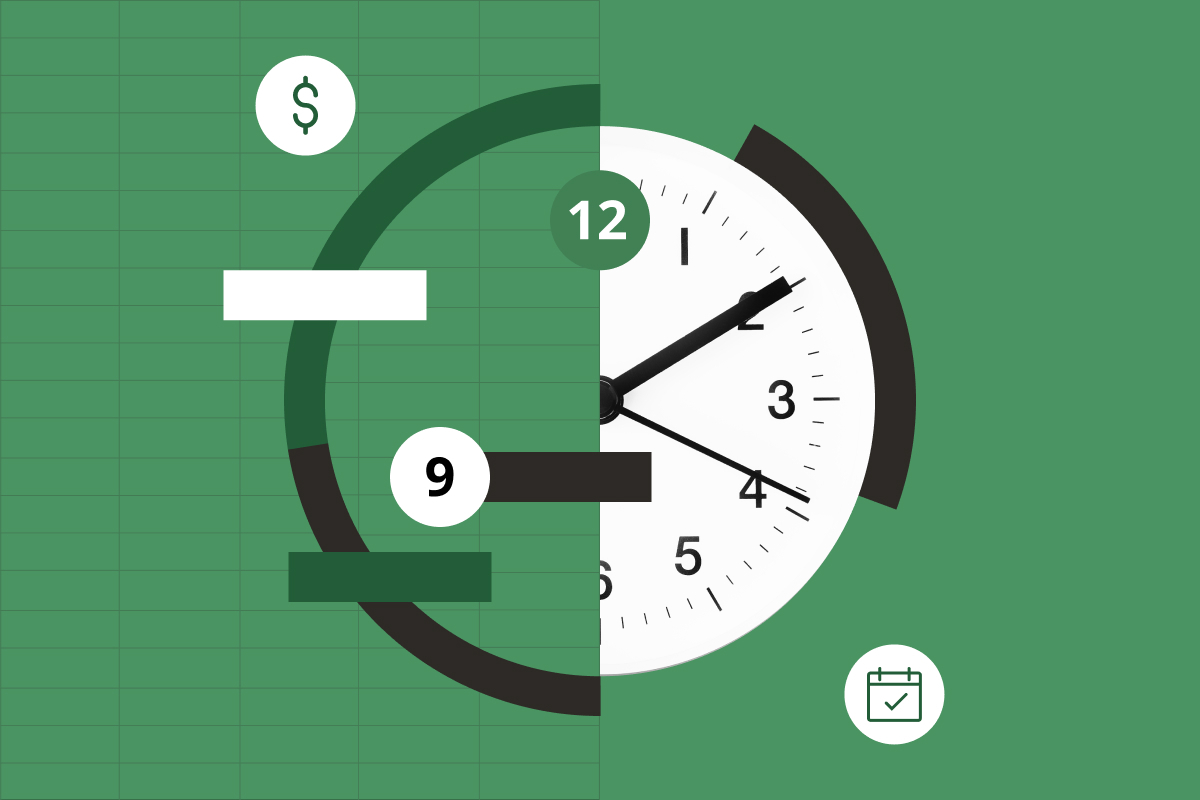In an age where businesses are doing more with less across their business functions, budgeting is often the exception. For many finance teams, it’s still painfully slow.
Between identifying underlying budgeting goals and staying accountable to them, then rallying departments across the business—chasing budget inputs and keeping contributors accountable to the timelines set—finance teams are scrambling to keep up. Yet many don’t have a formalized process in place to ensure everything gets done both accurately and quickly.
And, as our State of Strategic Finance 2025 report (in partnership with BPM Partners) shows, 89% of finance professionals still rely on Excel for budget input collection, among other tasks, even when they’ve already invested in planning software. The result is a budgeting process that’s more manual, fragmented and error-prone than it should be.
If this sounds familiar, you need a process that simplifies collaboration, cuts down the time spent chasing inputs and fixing errors and helps you deliver accurate budgets that can evolve with your business.
That’s exactly what this guide is here to help you with.
We break down the corporate budgeting process step by step, with templates, practical tips and real-world examples. You’ll also see how finance teams are using platforms with automation and collaboration built in to streamline budgeting, speed it up and make it easier to manage across the business.
The Corporate Budgeting Process: A Step-by-Step Breakdown
When you build a clear, repeatable process, budgeting becomes more than a yearly scramble. It becomes a strategic habit that supports your business all year long.
This eight-step budgeting process can improve how budgets get done, whether you're starting from scratch or optimizing an existing one.
Step 1: Clarify Goals Before Building the Budget
Before entering any numbers into a spreadsheet, everyone involved should be clear on why you’re budgeting in the first place. What are the company’s top priorities? What outcomes are you working toward in the next quarter, half-year or fiscal year?
Some teams jump into number crunching or copy last year’s figures without top-down clarity. But a financial plan is only helpful if it aligns with broader company goals, like which products are being prioritized and how they’ll reach your target market.
As Melissa Howatson, CFO of Vena, put it on The CFO Show podcast:
So, the corporate budgeting process should start with direction, not just line items.
And finance shouldn’t operate in a silo or wait for other teams to hand over plans. Instead, they should collaborate closely with other teams during company-wide strategy planning to ensure everything maps back to a budget that supports the bigger picture.
This way, you’re clear on strategic priorities and can tie every line item back to the bigger picture. When everyone understands the “why” it’s much easier to align on the “how much.”
Pro Tip: Use actual past performance insights to shape your goals, align teams around them and document everything in one shared location.
This helps you set goals that are realistic, relevant and rooted in what’s already working, so your budget reflects business priorities that teams can actually execute on.
For example, if you use a planning software like Vena, you can combine historical and real-time data, like revenue by segment, margin trends or regional performance, and build a custom dashboard using Vena Insights.

Using this dashboard, leadership, finance and other departments can assess what’s working and agree on which goals to prioritize in the next planning cycle.
Instead of relying on siloed reports or subjective assumptions for your quarterly or annual budget, everyone stays grounded in the same performance data.
This makes it easier for finance, sales, marketing and product to get on the same page and talk through priorities before setting the budget.
Step 2: Gather Inputs and Align Assumptions Across Teams
An effective budget requires input from every team that will own or impact part of the budget, such as marketing, sales, operations, HR and product.
Each team brings relevant context around what projects they’re planning, what resources they’ll need and what costs they expect to incur.
But here’s the thing: if each team works in their own silo and sends in numbers based on different assumptions, your budget’s going to be full of contradictions.
These disconnects create a ripple effect that leads to mismatches, rework and back and forth later in the process.
That’s why you need to ensure everyone’s working from the same starting point.
A simple way to do this is to ensure you’re working from a single source of truth that brings together real-time data from across your ERP, CRM and HR systems, so the inputs are grounded in actual trends.
And rather than merging reports manually or managing too many spreadsheet versions, use a corporate budgeting platform that allows you to bring all inputs into one place. With Vena, for example, your teams still get to work in the familiar interface of Excel, but backed by a centralized database saving everyone’s inputs, so there’s no need to send around different spreadsheets.
So when Sales enters pipeline projections, or Marketing inputs campaign budgets, they do it in Excel, just like they’re used to, but those inputs automatically update in real time on Vena, for finance and other stakeholders to access them.
This way, everyone’s working with the same assumptions, like growth targets, pricing updates or hiring plans, and you reduce back-and-forth and last-minute rework, as updates flow into one master budget instantly.
Step 3: Establish Owners, Deadlines and How You’ll Work Together
To ensure the entire budgeting process goes smoothly, start by assigning ownership.
Who is responsible for submitting budget inputs for each department? Who will review and approve them? Clear roles help avoid confusion and prevent tasks from falling through the cracks.
Here’s a rundown of who should own what in the budgeting process:
|
Who Should Own What in the Corporate Budgeting Process?
|
|
Function
|
Budget Input Owner
|
Typical Inputs
|
Review and Approval By
|
|
Sales
|
Sales Director / VP
|
Revenue targets, pipeline forecasts, regional sales goals
|
Finance and CRO/Head of Sales
|
|
Marketing
|
Marketing Manager / Head of Marketing
|
Campaign budgets, lead targets, event spend
|
Finance and CMO
|
|
HR
|
HR Manager / People Ops Lead
|
Headcount plans, hiring timelines, training costs
|
Finance and COO
|
|
Product
|
Product Manager / Head of Product
|
Feature development budget, tool costs, R&D investments
|
Finance and CTO/Head of Product
|
|
Operations
|
Operations Manager / Director
|
Vendor spend, logistics, infrastructure, software subscriptions (sharing ownership with IT)
|
Finance and COO
|
|
Finance
|
FP&A Lead / Controller
|
Consolidated master budget, assumptions, roll-ups
|
CFO
|
|
Executive Team
|
CFO / CEO
|
Final review, trade-offs, alignment with strategic goals
|
CEO and Board
|
When each team knows exactly what’s expected and when, there’s less room for delays, duplication or last-minute surprises.
Also, agree on how collaboration will happen. Will you review budgets in live meetings or asynchronously? How will feedback be shared? Will teams work in shared files or submit their budgets to a central reviewer?
If you’re using a tool like Vena, you can assign tasks to specific contributors, set submission windows and trigger approvals automatically. You can even track what’s been submitted and what’s still outstanding, assigning due dates, reminders and approval workflows so you’re not chasing down updates or guessing what’s still pending.

This way, everyone has a central place to submit their budgets, which eliminates version-control issues and keeps everyone on the same page.
Next, set clear deadlines for submissions, reviews, revisions and approvals. A well-paced timeline gives teams the breathing room to think through their inputs while keeping the process moving. On average, annual budgeting takes between one to three months, but some companies complete it in under a month.
Some of these teams finish faster because they set clearer timelines from the start, assign ownership early and use tools that simplify collaboration.
For example, people development software provider Speexx shaved over three weeks off their budgeting process after switching to Vena. Instead of emailing spreadsheets back and forth, their teams used Vena’s Excel-native platform to collect budget inputs, update forecasts, track submissions and collaborate in real time, without giving up the familiar interface they were used to.
Step 4: Build Your Budget Model
Your budget model is the foundation of your planning process. It defines how data flows, what categories you’re budgeting for and how everything connects, from revenue projections to headcount costs, departmental spend and operational expenses.
But here’s the key: don’t wait until inputs start coming in to figure this out. If every team works with a different format or structure, you’ll spend more time cleaning up spreadsheets than analyzing the budget.
Start by deciding what type of budget model you’ll use:
-
Top-down budgeting: Leadership sets high-level financial targets, like revenue goals or cost limits, and departments allocate their budgets within those constraints.
-
Bottom-up budgeting: Each team proposes their own budget based on their plans and estimated needs, and finance consolidates everything into one master budget.
-
Zero-based budgeting: Instead of using last year’s numbers as a starting point, every department must justify each expense from scratch.
-
Driver-based budgeting: Budgets are built around key business drivers, like sales volume, customer acquisition cost or headcount, which helps teams ground their planning in the KPIs most important to the business.
Choose the model that best fits your company’s size, planning culture and goals.
For example, fast-growing companies often prefer bottom-up or driver-based budgeting models because they’re more flexible. More mature and cost-conscious organizations may lean toward zero-based or top-down budgeting for tighter control.
Once you’ve chosen a model, create a standardized template that every team will use. This ensures consistency in categories, calculations and assumptions across departments and makes it much easier to consolidate inputs later. You can create one right in Vena, whether you prefer using top-down or bottom-up budgeting. Or get started by downloading our free top-down budgeting template.
Pro Tip: Integrate ERP data and historical trends into your budget model to give teams a clearer view of what’s worked, what’s changed and what to plan for, especially if you're using a driver-based approach tied to key business metrics.
Step 5: Roll Everything Up Into a Master Budget
Once each department has submitted its inputs, it’s time for Finance to pull everything together into one consolidated budget and review what teams submitted. You validate assumptions, check for gaps and make sure the pieces actually fit together.
For example, the sales team might have forecasted a 20% increase in revenue, but marketing’s proposed campaign budget hasn’t changed. Or HR may plan to hire aggressively, but operations hasn’t accounted for the added overhead. These misalignments become obvious when everything is reviewed in one place.
Using a budgeting platform simplifies this process, as you can quickly see departments’ inputs all together, spot inconsistencies and apply changes without reworking multiple files.
And finance can easily roll up inputs into a master budget in real time and begin adjusting forecasts and running scenarios. You also get a clear audit trail, so if something looks off it’s easy to trace it back to the department, version or assumption that caused it.
Step 6: Review, Iterate and Finalize the Budget
At this stage, finance and department leads need to carefully review the numbers, validate assumptions and resolve any conflicts before final approval. This typically involves several rounds of iteration, like updating forecasts, revisiting team inputs and making sure everything aligns with current company priorities.
With the right planning software, these reviews don’t have to mean hours of digging through spreadsheets. Tools like Vena let teams compare budget versions, track changes and update figures without duplicating work across files.
And with Vena Copilot, finance teams can move even faster. Instead of running multiple reports or waiting for ad hoc analysis, FP&A leads can get answers to their questions.
Take the Association for Institutional Research (AIR), for example. With just two people on the finance team, AIR used Vena Copilot to eliminate manual effort and speed up analysis. They now ask real-time questions like “How does our budget compare to actuals?” or “How is Program A performing this quarter?” and instantly get answers they can use to adjust plans, without adding headcount or slowing down.

You can also use scenario planning to stress-test budget assumptions and weigh trade-offs before finalizing
Step 7: Get Executive Sign-Off and Communicate the Plan
Once the budget is finalized, the next step is to secure executive approval. At this stage, leadership wants to know if the budget reflects current priorities and whether the numbers are realistic given market conditions and recent performance.
It’s more impactful to present a focused budget summary to executives rather than walking through every line item. You can highlight key assumptions, explain changes from the previous year and tie each department’s plan back to broader company goals.
Once approved, communicate the plan clearly to all stakeholders. Budget owners and key stakeholders should understand what was approved, what they are responsible for and how their performance will be tracked. This sets expectations early and helps teams stay aligned throughout the year.
If you’re already using a platform like Vena, you can share the approved budget directly based on roles and track changes made.
Step 8: Monitor, Reforecast and Stay Agile
Finalizing the budget doesn’t mean you’re done. Business conditions change, sometimes fast. Hiring plans slow down. Sales spike unexpectedly. A key vendor raises prices. That’s why your budget needs to be a living model you revisit and update regularly.
Start by tracking actuals against budget. Where are you over or under? What assumptions no longer hold? The sooner you spot a variance, the faster you can respond, whether that means reallocating spend, adjusting forecasts or rethinking priorities.
When plans shift, reforecasting lets you course correct without rebuilding the entire model. If you’re using Vena, actuals flow in automatically from your ERP and teams can revise their forecasts directly in the same model they used to build the budget. And you won’t need to create new files or hunt down data. Everyone sees what changed, what needs attention and how those changes impact the bigger picture.
This kind of continuous monitoring helps your team stay agile, make data-informed decisions and keep execution aligned with strategy, even when the unexpected happens.
What a Successful Budgeting Cycle Looks Like
Budget season can feel like organized chaos. And just when you think it’s done, someone changes a key assumption and everything falls apart. But it doesn’t have to be that way. When you build a clear, repeatable process, budgeting becomes more than just a one-off exercise you do once a year. It becomes a strategic habit that supports your business year-round.
And that’s exactly what happened at Prime Healthcare.
Despite being a multi-billion-dollar business with 45 hospitals and hundreds of outpatient locations, they were operating without a formal budgeting or forecasting process. But after bringing in Vena to give their budgeting cycle some rigor, Finance was able to take more control. Leaders made faster decisions and every team had better visibility into where the business was headed.
And you don’t need to be a hospital network to make this work. Whether you’re managing three departments or 30, a structured budgeting process keeps everyone aligned, even when business conditions change.
When that structure is built on the right tools and a shared strategy, budgeting becomes less about chasing numbers and more about driving impact.










